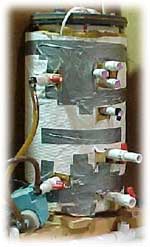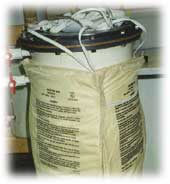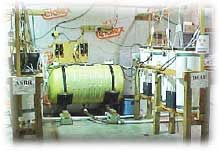The first stage of the experiment demonstrated that settling processes, rather than biodegradation, accounted for most of the organic matter reduction in both reactor types, when operated at a 0.5-d hydraulic retention time.  Specifically, settling accounted for an average of 100% of the chemical oxygen demand (COD) removal in the ASBR reactors, and for an average of 72% of the COD removal in the DFAF reactors.
Specifically, settling accounted for an average of 100% of the chemical oxygen demand (COD) removal in the ASBR reactors, and for an average of 72% of the COD removal in the DFAF reactors.
The second stage of the experiment explored the possibility of removing volatile fatty acids (VFA) from synthetic dairy lagoon supernatant.
At low VFA loading rates (1.0 and 3.0 g L-1 d-1), both reactor types achieved moderate VFA removal. However, at high loading rates (6.0 g L-1 d-1), the ASBR reactors were ineffective, whereas the DFAF reactors - at both 25 and 35°C - removed more than 80% of the influent VFA concentration.
Based on these experiments, it appears that the DFAF reactors are better suited to the task of rapidly removing accumulated VFA from lagoon supernatant.
An economic analysis suggests that this approach becomes more economically feasible as the amount of overloading increases.
Specifically, if a properly designed and operated lagoon experiences an overloading due to more than an additional 200 cows, then using this technology may be less expensive than enlarging the lagoon to avoid overloading.
